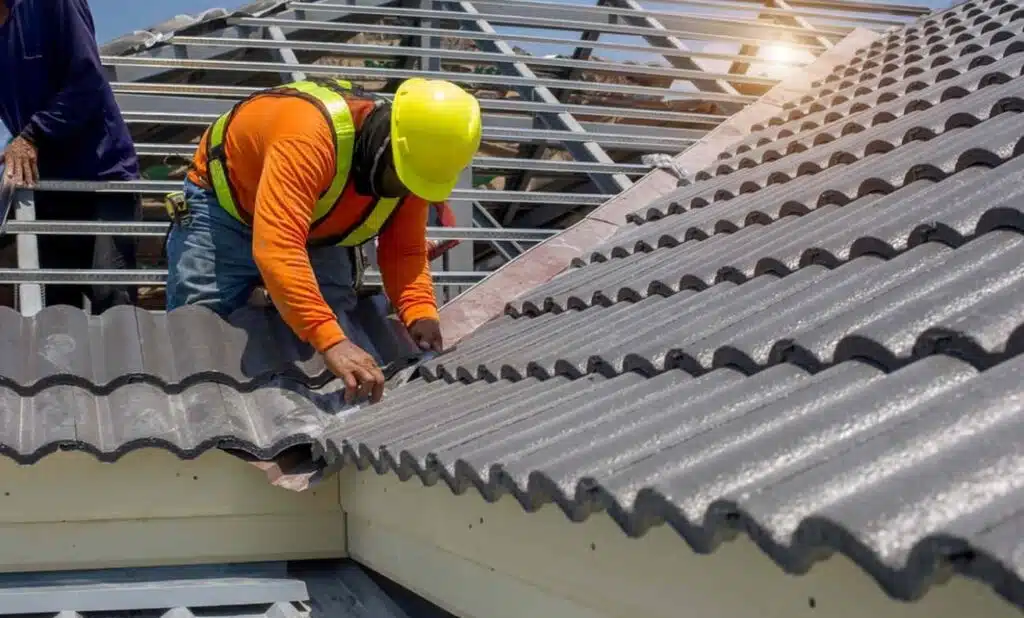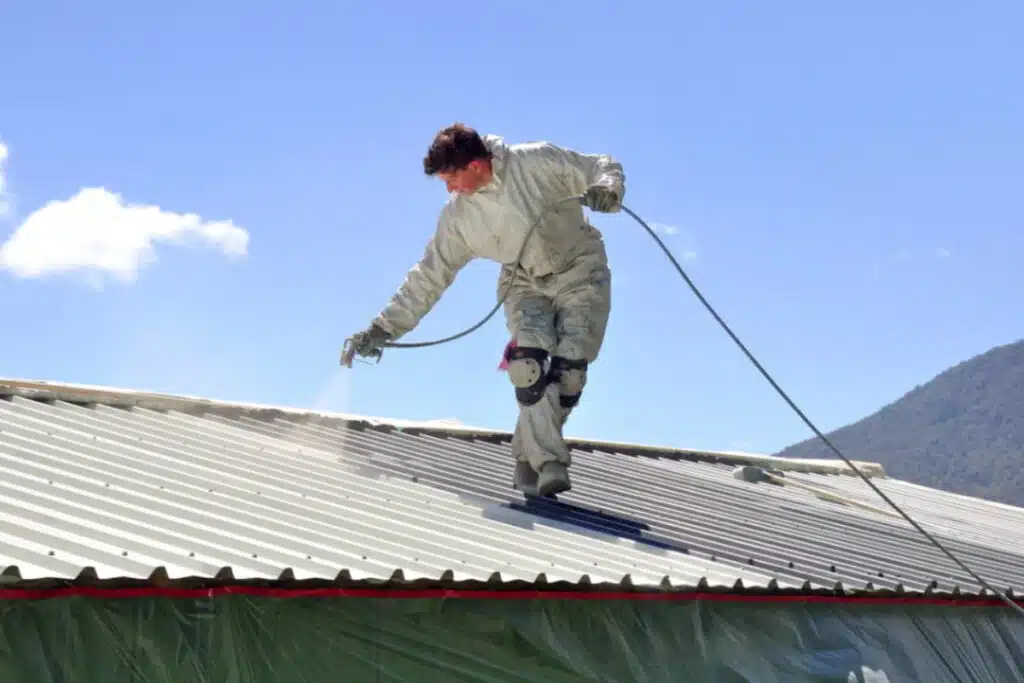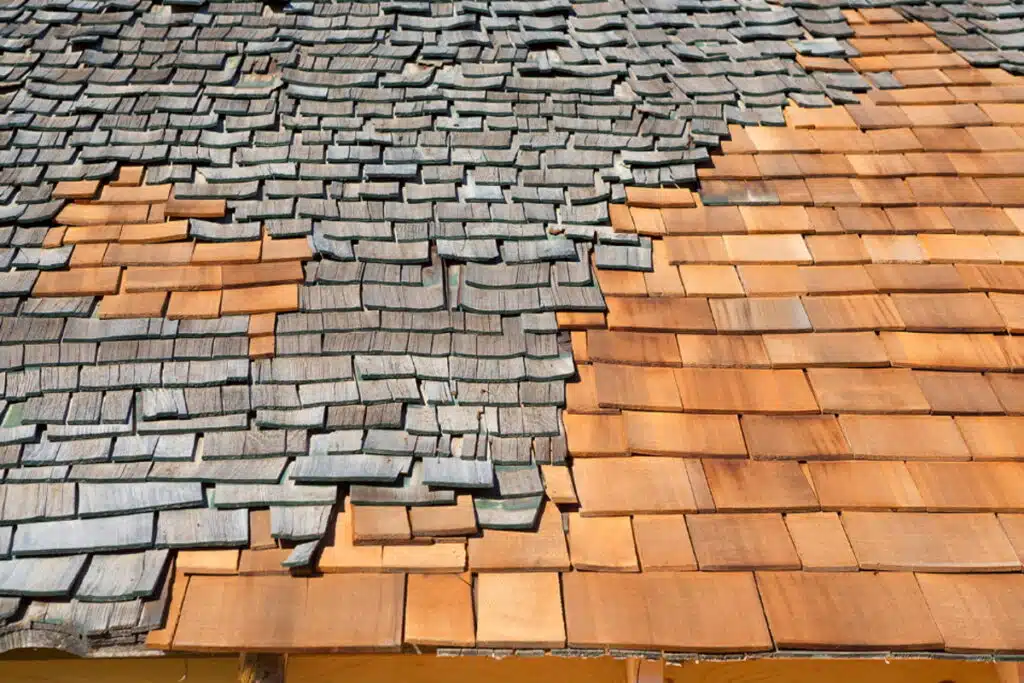Florida’s weather is a unique mix of intense sunshine, high humidity, heavy rainfall, and the occasional hurricane. Your roof is your first line of defense against these extreme elements, which makes choosing the right roofing material critical.
With so many options available, Florida homeowners often ask, “What is the best roofing material for Florida weather?“
This blog will guide you through the various roofing options suited for Florida’s climate, their pros and cons, and factors to consider before making your choice.
The Challenges of Florida Weather
Before we explore the best roofing materials, it’s important to understand the specific challenges that Florida’s weather poses to your roof:
- Intense Sun and Heat
Florida summers average temperatures between 85°F and 95°F, with constant exposure to UV rays. These conditions can lead to fading, cracking, and warping of certain roofing materials.
- Heavy Rain and Humidity
Florida experiences frequent rain showers, especially during the summer. This high moisture content can lead to mold, mildew, and water damage if your roofing material isn’t waterproof or well-sealed.
- Hurricanes and High Winds
Florida is no stranger to hurricanes. The state experiences wind speeds that can reach over 150 mph. Choosing a roofing material that can withstand high winds, flying debris, and heavy storms is essential.
- Salty Air (Coastal Regions)
If you live close to the coast, salt in the air can accelerate corrosion and deterioration of your roofing material.
Now, let’s explore the roofing options most commonly used in Florida and how they stand up to these challenges.
1. Metal Roofing
Why it Works for Florida Weather
Metal roofs are a top choice for Florida homes because they excel in durability, heat resistance, and wind resistance. The reflective qualities of metal make it an energy-efficient option, as it reduces heat absorption and keeps your home cooler.
Key Benefits:
- Durability: Metal roofing can last 40 to 70 years with proper maintenance.
- Wind Resistance: High-quality metal roofs can withstand hurricane-force winds of over 150 mph.
- Eco-Friendly: They’re recyclable and often made from recycled materials.
- Low Maintenance: Metal roofs are resistant to moisture, mold, and mildew.
Considerations:
- Cost can be higher compared to some other roofing materials, with installation ranging from $10 to $20 per square foot.
- Some homeowners find the sound of rain on a metal roof noisier than other options, though this can be mitigated with insulation.
2. Asphalt Shingles
Why it Works for Florida Weather
Asphalt shingles are one of the most popular and affordable roofing options in Florida. Modern asphalt shingles designed for high-performance use are made to resist heat, humidity, and even impact from hail and debris.
Key Benefits:
- Affordability: Asphalt shingles typically cost between $5 and $12 per square foot, making them a budget-friendly option.
- Variety: Available in various colors and styles to suit your home’s aesthetic.
- Easy to Install: Installation is relatively quick and simple.
Considerations:
- Asphalt shingles generally have a shorter lifespan of 15 to 30 years.
- Without proper ventilation, they can trap heat, leading to premature wear and higher cooling costs.
3. Clay and Concrete Tiles
Why it Works for Florida Weather
Clay and concrete tiles are prized for their durability and ability to withstand extreme heat. They are highly resistant to rot, insects, and fire. Plus, they can give your home a beautiful, Mediterranean-style aesthetic.
Key Benefits:
- Longevity: Tile roofs can last up to 50 years or more.
- Heat-Resistant: Their thermal insulation properties help keep your home cool.
- Storm-Resistant: Concrete tiles, in particular, are highly resilient against hurricane-force winds.
Considerations:
- Tile roofs are heavy and may require additional structural reinforcement.
- The initial cost is higher, ranging from $10 to $25 per square foot.
- Regular inspection and maintenance are necessary to replace any broken tiles.
4. Slate Roofing
Why it Works for Florida Weather
Slate is known for its incredible longevity and natural beauty. It holds up well in Florida’s heat and is impervious to rot and insects.
Key Benefits:
- Durability: Slate roofs can last over 100 years with proper care.
- Eco-Friendly: Natural stone material that doesn’t require chemical processing.
- Fire and Water Resistant: Slate performs well in wet and high-heat conditions.
Considerations:
- Slate roofs are among the most expensive, typically costing $15 to $30 per square foot.
- They are heavy and may require additional structural support.
- Professional installation is a must, as slate is a delicate material to work with.
5. Flat Roofs with Modified Bitumen or TPO
Why It Works for Florida Weather
Flat roofs are often used in commercial buildings or modern home designs in Florida. Modified bitumen and thermoplastic polyolefin (TPO) are two common materials for flat roofs that perform well in heat and rain.
Key Benefits:
- Cost-Effective: Generally more affordable than tile or metal roofing.
- Waterproofing: Flat roofs with the right material and drainage system can handle Florida’s heavy rainfall.
- Energy Efficiency: Many TPO flat roofs are designed to reflect UV rays and reduce cooling costs.
Considerations:
- Flat roofs require professional installation and regular maintenance to prevent leaks.
- The lifespan is shorter, usually lasting between 10 and 20 years.
Read Also: Gutters for Metal Roofs: The Best Options in 2025
Factors to Consider When Choosing a Roofing Material
1. Budget
Understand the total costs, including installation and long-term maintenance, before making a decision. Asphalt shingles are great if you’re on a tight budget, while metal and tile options are better long-term investments.
2. Aesthetic Appeal
Choose a material and color that complements your home’s architectural style. For example, clay tiles pair beautifully with Mediterranean-style homes, while metal roofs offer a sleek, modern look.
3. Durability and Lifespan
Consider how long you intend to stay in your home and weigh the upfront cost against the lifespan of the roofing material.
4. Energy Efficiency
Florida’s heat can drive up cooling costs. Reflective materials like metal and TPO can help reduce energy usage and keep your home comfortable.
5. Hurricane Ratings
Confirm that the roofing material you choose meets Florida’s building codes for hurricane resistance. Look for impact and wind resistance certifications.
Protect Your Florida Home with the Right Roof
Your roof is all that stands between your family and Florida’s harsh weather conditions. Choosing the best roofing material can enhance your home’s appearance while providing comfort, efficiency, and protection.
To find the right solution for your needs, consult with a roofing professional who understands Florida’s climate and building codes. Remember, investing in a high-quality roof today can save you from costly repairs and stress down the line.
Still unsure of which material is right for you? Contact licensed roofing contractor Rhino roofing Orlando in Florida to discuss your options and start protecting your home!




